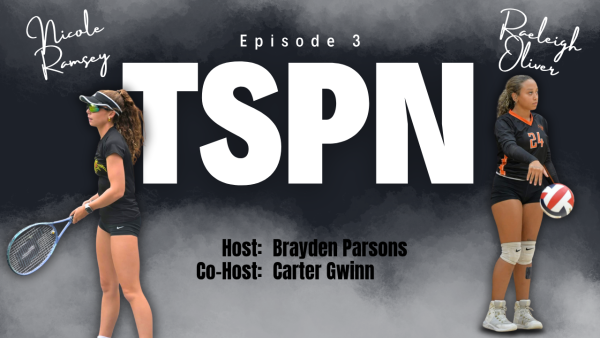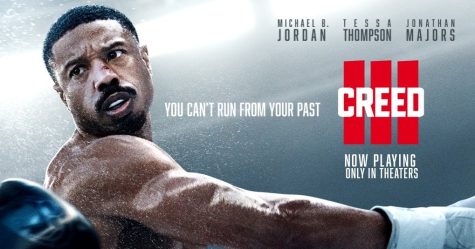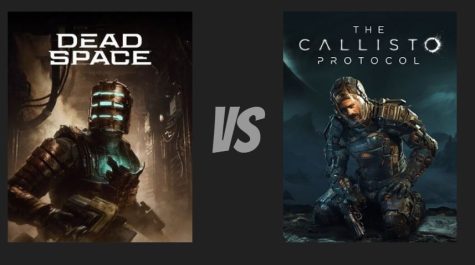“It was the Boogeyman Man”: Michael Myers Forty Year Reign of Terror

Forty years after its release, Micheal Myers still holds a grip on horror movie fans
If you want to find a way to jar my jaws (pun intended) into talking, here is one sure-fire topic that will have my lips flapping for hours: John Carpenter’s 1978 seminal horror film classic, Halloween.
This low-budget film, costing only $325,000 to produce, has become the beacon for which all horror films revolve. The film changed the landscape of Hollywood and ushered a new dawn for horror by creating a new genre known as the slasher film.
Current Hollywood horror directors such as Eli Roth (Hostel) and Greg Nicotero (The Walking Dead) all note Halloween as a pivotal film influencing and changing the way they perceived the horror genre. This year, the original film celebrates its 40th anniversary, while the 2018 sequel (picking up forty years after the events of the first film) currently is dominating the box-office, scoring an opening weekend total of over $77 million dollars (second highest opening for an October film release and horror film).
Why is it that after forty years Michael Myers, the white-faced, masked killer, still strikes terror and fear with viewers today?
The answer is as simplistic as the white mask worn by Michael himself. As a film, Halloween concerns itself with observing, studying, and then reacting without revealing the true intentions of its main antagonist, Michael Myers, making the audience dig into the deepest part of their psyche by confronting their primordial fear of the unknown.
The original Halloween’s is essentially a voyeuristic film, concerned with creating suspense rather than overwhelming with violence.
The story (originally entitled The Babysitter Murders) concerns itself with a killer named Michael Myers, who on October 31, 1963, murdered his sister, Judith, on Halloween night. Fifteen years later, Michael escapes from the Smiths Grove Sanitarium and is pursued by his doctor, Dr. Sam Loomis, who tries to convince local authorities about the dangers of Michael Myers and the havoc that he could wreak on the town of Haddonfield. Eluding capture, Michael follows a group of young girls and focuses on the young and angelic, Laurie Strode, whom he terrorizes making her believe at the films conclusion that Michael was a real-life boogeyman come to life.
What Michael does throughout the film is watch and learn. Initially, he is not concerned with stacking up bodies and violently murdering his prey. He lays in the shadows. Michael is what we fear in the shadows when we open the closet. Michael is what we fear when we can’t see what is in front of us, although we can make out some semblance of “The Shape” (This is how the character is credited in the films closing credits, not Michael Myers). Michael is the cognitive mind playing tricks making us ponder if what we are seeing is real or our imagination.
In the beginning of the film, Michael is our worst fear imagined. It is safe to assume as a viewer, a man would commit the violent act in the films beginning do to the nature of the crime, along with assumptions drawn from other horror clichés; however, it turns out to be a child. This forces the audience into a vicarious position by making viewers realize that what you thought to be true is in complete contradiction to what is perceived as normal.
Film director John Carpenter is setting his audience up to showcase Michael has no soul, no empathy, and no emotion. His sole motivation is to watch, lurk, and strike. He is not brash nor violent when he watches Judith with her boyfriend in the living room, but he is content to let Judith place herself in the position where she most vulnerability–when she is alone in her bedroom with no one to protect her. The attack is brutal but the violence is not shown. Carpenter does not show Michael actually stabbing his sister: The act is done off-camera. As an audience we are projecting the horrific images through our imagination just as we will do when Michael dons the iconic white, pale, emotionless mask.
When he escapes, he targets a young Laurie Strode and a young Tommy Doyle. What is so alluring about these two individuals? One of the elements defining Michael is he gives no purpose or reason for his decisions. It is possible he chose Laurie because she and Tommy inadvertently and unknowingly come in contact with him when Laurie drops off the key to the Myers house. Could they be triggering a response in him that is part of his nature, something he cannot and does not want to control? As he lurks in the doorframe from inside his old home, watching them as they leave, he does not act or attack. He simply watches.
Later, Laurie while sitting in her English classroom sees Michael standing across the street just watching. Laurie has difficulty making out the shape that does not move and possibly questions if he is even there to begin with thereby making the audience wonder if we are in fact seeing him. After watching her, he watches young Tommy Doyle coming out of school after having his pumpkin smashed by the class bullies. Michael tracks him and drives next to him but does not do anything to him. Why? Is he using him to create his master plan because he has heard that Tommy is afraid of the boogeyman? Essentially, this is what makes Halloween so terrifying: We do not know Michael’s motive. In fact, we never fully understand Michael’s motive. In one of the films mood defining scenes, Dr. Loomis informs Sherriff Bracket that he tried to reach Michael at an early age, but realized after time “that what was living behind that boy’s eyes was purely and simply evil” (Carpenter). This vague and broad sense of character and motivation is what truly defines Michael. The mask he places on his face is one that portrays no emotion. We as viewers cannot conclude what is happening underneath the mask.
The idea of evil and motivation is conveyed in Michael’s actions. One of the reasons Michael stands alone in the cinematic world of movie monsters is his uncanny ability not to initially act violently. He tracks his victims and he studies them. In one of the films symbolic scenes, Michael follows Annie and Laurie as the drive to the homes they are going to babysit. Laurie’s quasi-paranoia state is negated by Annie’s unwillingness to accept that Laurie is seeing someone (for the fourth time no less) who is watching her. As she castigates Laurie, Michael appears following them from behind. In Annie’s car, the song playing on the radio, while the two girls discuss the possibility the old man Mr. Riddle (87 years old no less, but who is an enigma like Michael) was probably the one watching her, foreshadows what is behind them and what is to happen in the future. Blue Oyster Cults immortal rock classic “Don’t Fear the Reaper” plays on the radio as the girls remain unaware that death is behind them ready to take their hands so they can, as the song states, “become like they are”–victims at the hand of The Grim Reaper. The true enigma, a real-life Mr. Riddle, is watching and learning.
Also, when Annie and Laurie arrive at their respective homes for the night of babysitting, Michael has tracked them like a hunter but does not pursue. He watches. He begins with Annie first, not Laurie, studying her every move. Michael watches Annie through the window when she is calling Laurie. Michael watches Annie go to the laundry room, and he watches her in the doorway as she talk to her boyfriend Paul. Again, Carpenter plays on the idea of our mind deceiving us. Is Michael really there or not? How is it that Annie does not see him in the doorway or when she turns around in the laundry room where seconds earlier he was standing tilting his head back-and-forth?
This sequence is reminiscent of the earlier scene in which Laurie and Annie are walking home and Michael is standing in the distance in front a wall of shrubbery. Laurie sees him but Annie does not. Annie is not afraid to confront the “creep” while Laurie stands back. Of course, he is gone. Annie questions Laurie’s observation and thereby we are questioning ourselves. Did we really see him or was it our imagination? Moments later when Laurie enters her bedroom, she believe she sees Michael in the backyard looking up at her room. She closes the window and then Carpenter cuts back to the lawn, but he is gone. Michael is an idea, an embodiment, a concept of evil that cannot be fully grasped by the mind and we question or try to deny its existence.
The idea of Michael embodying a concept makes him menacing. By representing evil, he is everywhere and nowhere simultaneously. In the long tracking shots when we are first introduced to Laurie, we feel the presence of Michael: We know he is out there, but we just do not know where he is lurking. As an audience, we are trying to find him, but like Laurie we are not sure if we actually are seeing him or are we just imagining him at that moment. In the end of the film, all we see are the locations that Michael has struck terror and claimed his victims, but we do not see him. What we hear is his breathing coming simultaneously from somewhere and nowhere.
The epitome of Michael’s actions is showcased in the final act of the film. It is only after he has killed Bob, Lynda’s boyfriend, by mounting him to the kitchen wall, do we receive a glimpse and insight into Michael’s mind. The head tilt back and forth after he murders Bob shows the psychological aspect of an evil entity admiring his work. He is an artist and his victims are part of his artistic masterpiece. As a viewer, we must confront the idea that this entity is comfortable in this position and has no intention of inhibiting his actions: He has only begun.
Laurie knows there is something wrong, but cannot firmly grasp what is going on with her friends. The distractions of calming and soothing Tommy about the boogeyman have questioned her belief that maybe he might be right. When she enters the house across the street, she bears witness to the production and spectacle Michael has created. Later, Laurie sees Annie spread across the bed with the tombstone of Judith Myers (which Michael stole earlier in the film, revealed when Loomis visits the graveyard where she is buried). She sees Bob swinging from one closet and then finds her friend Lynda stuffed into a closet after being strangled by Michael. Now that Laurie has been broken emotionally, Michael decides to attack her while hiding in the shadows of the closet; thereby completing the one final piece in his production.
Here is when the idea of the “slasher” comes fully realized. Michael chases Laurie throughout the house, even blocking her possible escape through the kitchen glass door with a rake. His slow and steady gait is what makes Michael Myers different from any other movie monster. He is not in a hurry to finish Laurie Strode. When she smashes through the glass to run from Michael, she staggers across the lawn pleading for help. Of course, it falls on deaf ears and Michael is not behind her. He allows her to reach the safety of her home and only then does he begin the slow but menacing walk to her. Michael is allowing her to believe that she might escape him. She cannot find the keys to the house, leading the viewer to believe that Michael knows this and is allowing his prey to tire itself out before he strikes his fatal blow.
In Laurie’s final confrontation with Michael, after she has stabbed him with a needle in the neck, stabbed him with a knife after she was cornered in a closet, and fought nearly being strangled to death before being rescued by Loomis, Michael has proven that he will not stop. Michael cannot be stopped. In essence, Michael is everything we fear as an individual and society. Evil knows no boundaries. Evil cannot be rationed with. Evil will not die. Over the decades as mounting terrorist attacks continue to thrive in the news, along with continuous acts of violence in the form of hate crimes and senseless violence against innocent and young victims, we look for answers, trying to determine what would trigger such hate eliciting such heinous acts of violence. As we have learned, many times throughout the years, there is no rationale. These acts are emotionless crimes of evil. Just what Loomis saw in the eyes of a young Michael Myers.
Michael Myers is the true embodiment of the enigma; the emotionless face allows us to project our fears and see them reflected back upon ourselves. Forty years have passed since “The Shape” stalked the residents of Haddonfield, Illinois; chances are his face will reappear while residing in our psyche for decades to come. We can choose to ignore him, but we will never stop pondering about Michael Myers and what he symbolizes. Remember, you can’t kill the boogeyman.
Work Cited:
Carpenter, John, director. John Carpenter’s Halloween. Compass International, 1978.












Jeremy Byers • Nov 1, 2018 at 8:59 am
Great job Mr. Rutter!
Caden Brooks • Oct 31, 2018 at 8:10 am
Great article, Mr. Rutter!